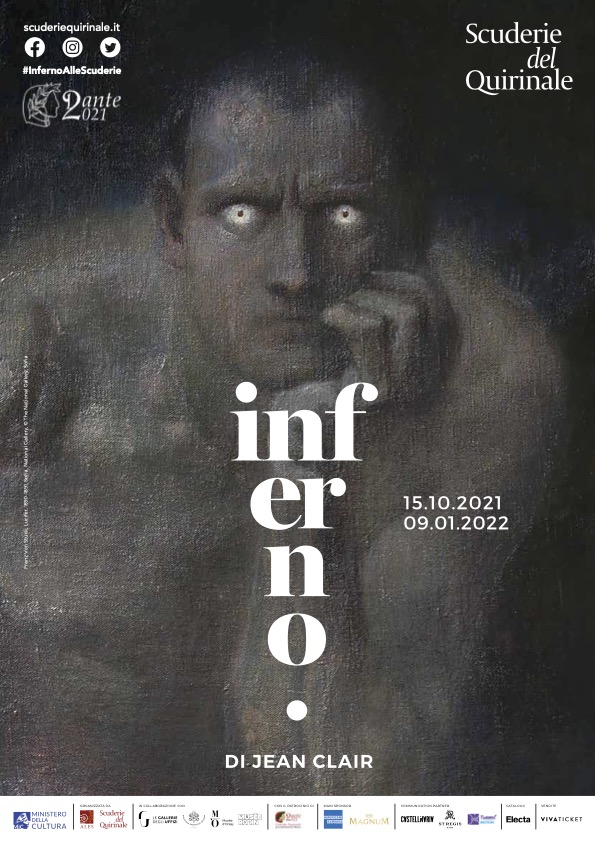Dante, Author of the Divine Comedy
Dante Alighieri The Illustrated Divine Comedy, XIVth Century Paris, Bibliothèque nationale de France, ARS – Bibliothèque de l’Arsenal
Dante's Comedy has been read in many different ways. After the first decades since its publication, an allegorical interpretation of the "sacred poem" got consolidated. But in Renaissance culture Dante was seen as a Neoplatonic poet. And further on - in the Romantic-Risorgimento period - he took on the guise of the romantic poet and of the prophet of New Italy.
In any case, since the very moment it was first published in its entirety, in the spring of 1322, the Comedy immediately met with a resounding success. The complexity of the operation and the daring novelty of a text that narrated, in first-person, the journey into the realm of the dead undertaken by a more or less contemporary writer, caused an immediate flourishing of written comments.
And also of illustrations, which helped to establish a "scenario of eternity" permanently.
Dante had made full use of the visual imagery available to him, but the Afterlife he delivered to readers was ultimately completely personal, brand new, completely redesigned.
Laura Battaglia Ricci, in her text in the catalogue, demonstrates how it was difficult for the first illustrators of the Comedy to deal with this novelty. The image of Lucifer, for example, and its precise location within the Dantesque cosmos take only a certain physiognomy in the late fifteenth century, with Sandro Botticelli.
In the Last Judgment of the Sistine Chapel, Michelangelo does not represent the literary text, but a philosophical-theological debate. And yet his images, conceived to convey moral lessons and emotional suggestions, are also a tribute to Dante Alighieri, who had intervened on the chaotic reality of the painted hells known to him, and had innovated, building an ordered and rational penal system. The impact on the later figurative tradition was enormous, and illuminated books contribute significantly to this real revolution.
Since the earliest illustrated testimonies that have come to us, a specific type of images has been very successful: Dante crossing the otherworldly realms in the company of his guides. This is a real iconographic canon, which lasted until the modern editions of the Comedy. The canon also includes images, at the beginning of the book, that were supposed to guide the reading of a disconcerting book such as the Comedy. The various "dormant" or "meditating Dantes" are exemplary in this sense. They were used to give a foothold to those who asked themselves a question, inevitable for the first readers: what was the Comedy really? A pure literary invention? Or on the contrary, the chronicle of a journey into the world of the dead actually made by Dante Alighieri registered in the registry office in Florence and exiled in Verona? Maybe it was the account of a vision, but actually experienced by Dante. And finally: was the author of the Comedy “only” a poet or rather a poet inspired by God? The image of the "sleeping Dante" tried to offer an answer.
In any case, between the late fourteenth and early fifteenth centuries many images circulated of the author seated in his study, often with the book in hand. At the end of the sixteenth century, in the print entitled "Florentinus Poeta Dante Aligerius", Giovanni Stradàno placed around the poet's bust, in addition to the images of Beatrice and Virgil, the graphs that summarize his topographical inventions. You can see Stradano's illustrations in the first part of room 4 of the exhibition.
Also at the end of the sixteenth century, Federico Zùccari in Spain made the eighty-eight drawings of his monumental Dante historiato. On the Frontispiece, the poet shows his own book open at the height of the twenty-fifth canto of Paradise.
Similar operations are also recorded in the nineteenth century, when the figure of Dante, the stories of his characters, and the real or invented episodes of Alighieri’s life are once again translated into images. At the beginning of the century William Blake portrays the author engaged in a sort of dialogue with Ugolino, whom the English artist considers a victim of the rigid Catholic doctrine of the sins shared by Dante.
In a completely different critical perspective, in the 1840s Carl Christian Vogel von Vogelstein portrayed Dante in the act of composing his work inspired by God, sitting on the tomb of Beatrice, inside a sort of religious building that recalls the facade of the cathedral of Orvieto, and displays ten "stages" of Dante's journey as a character.



